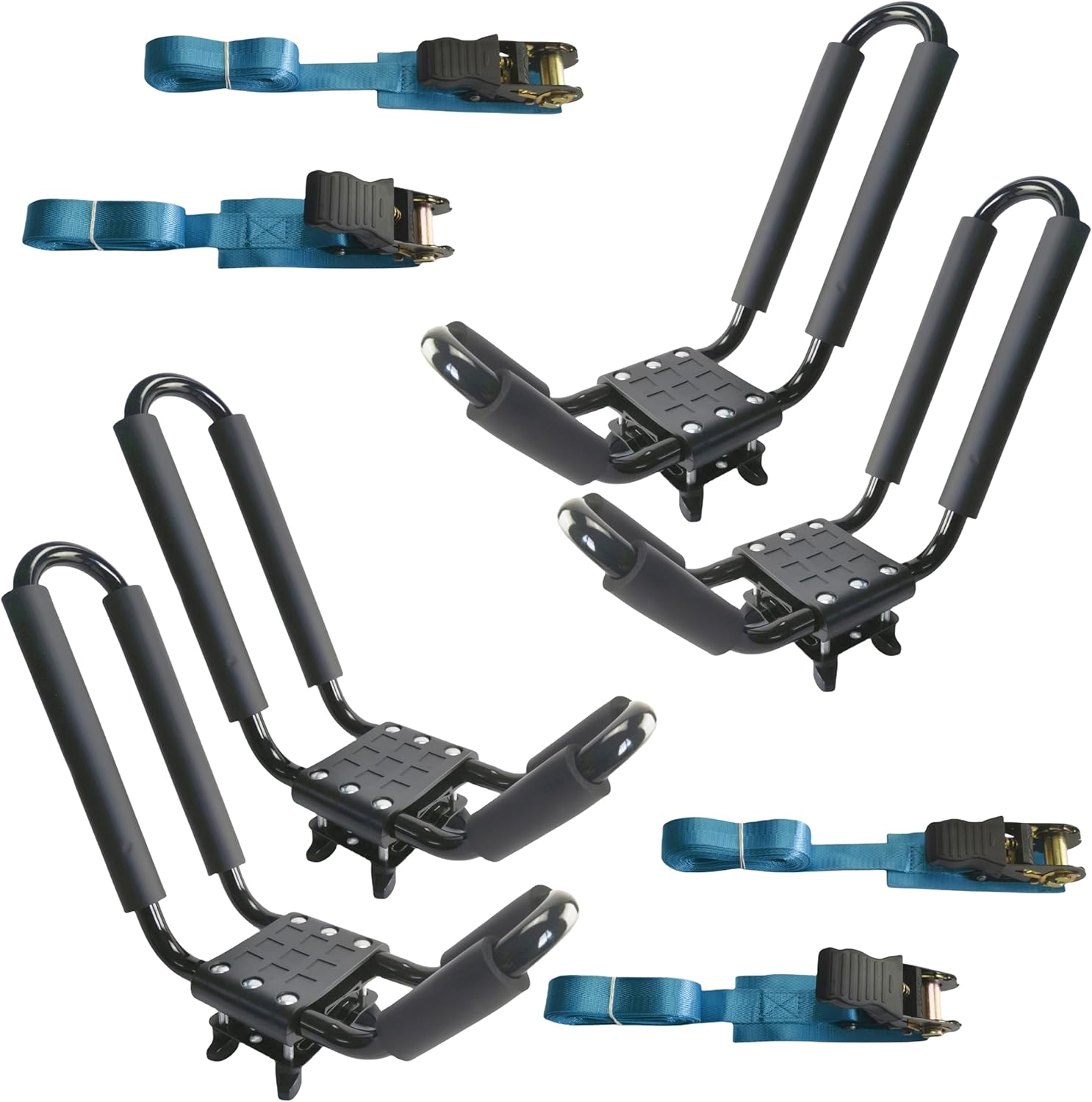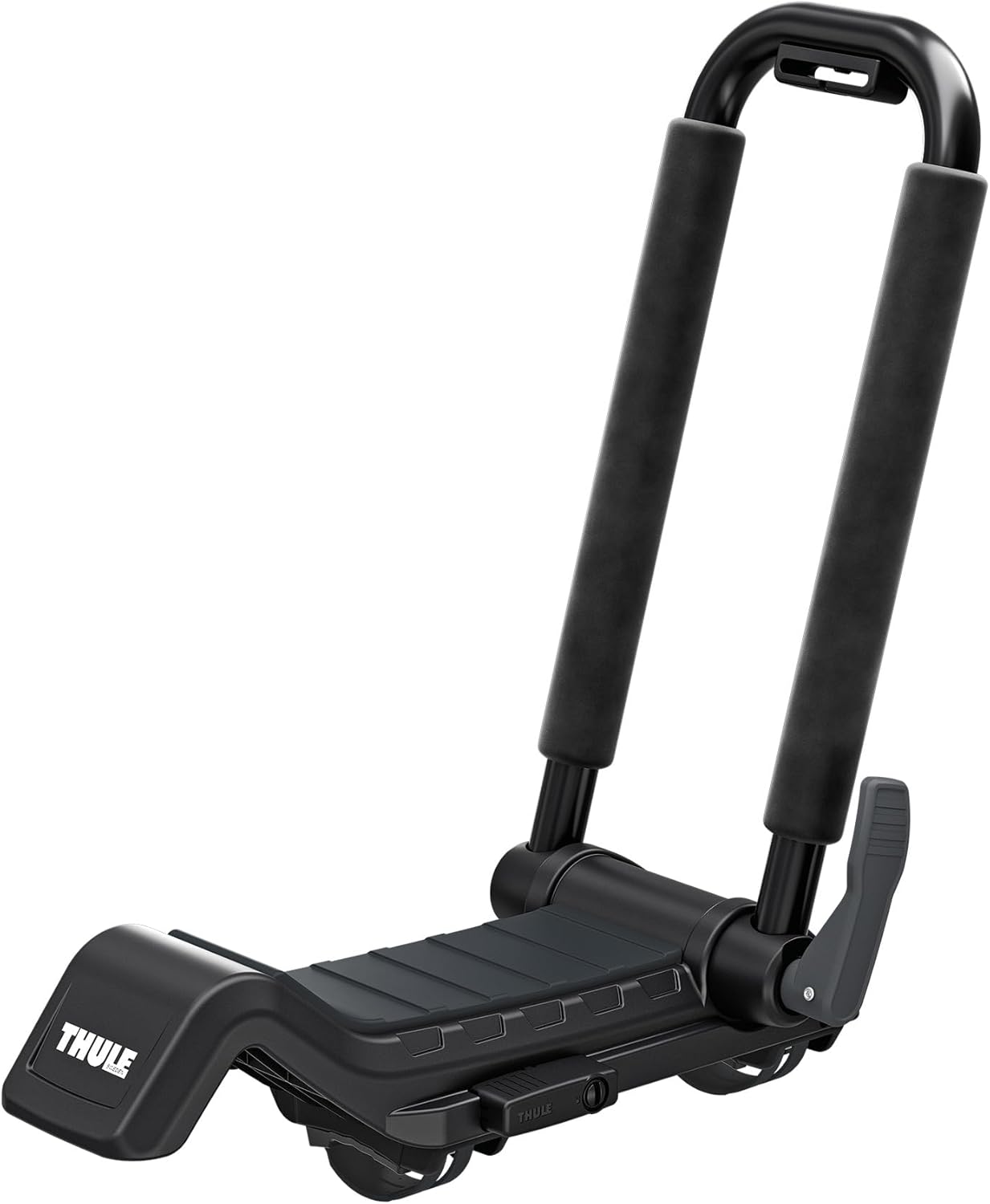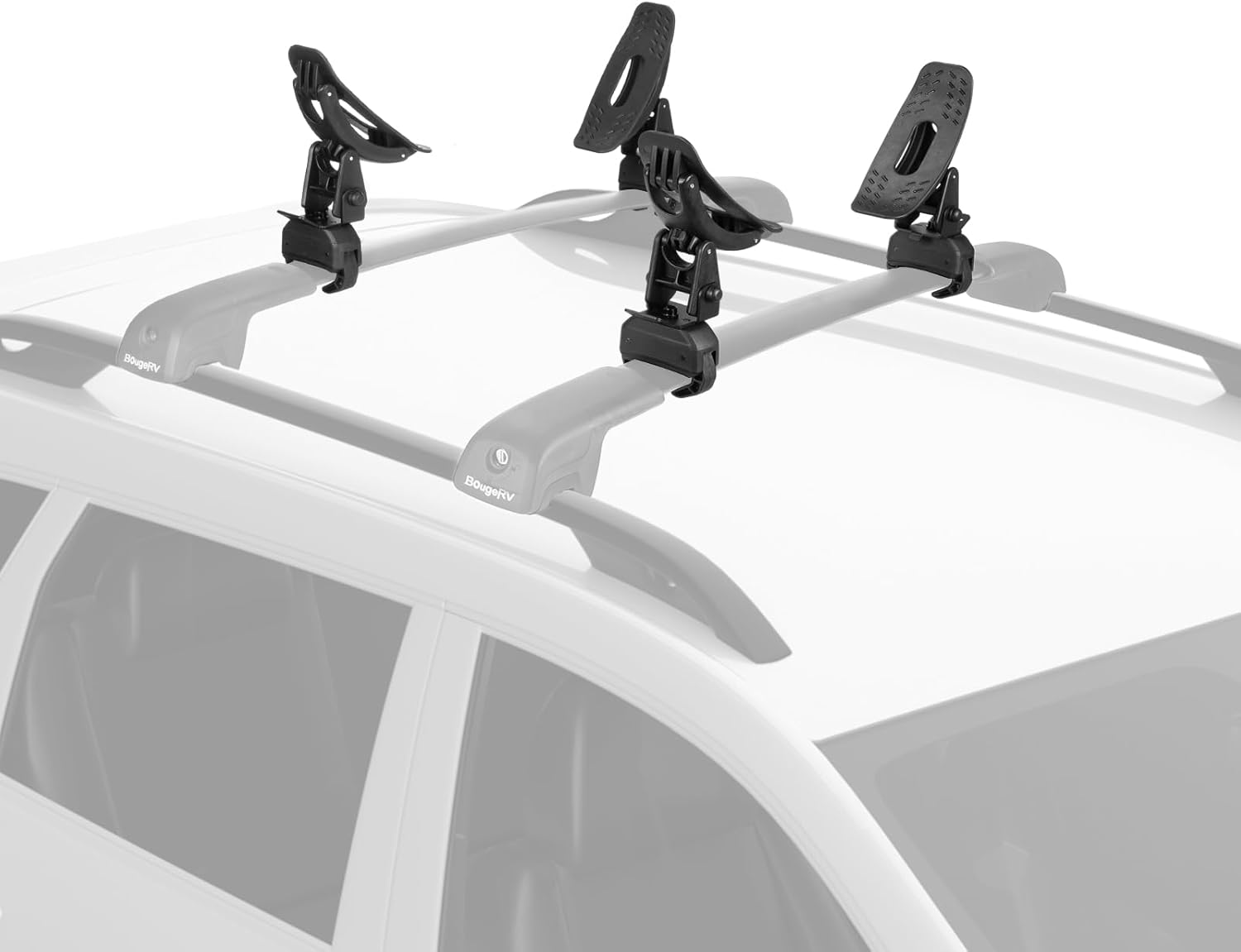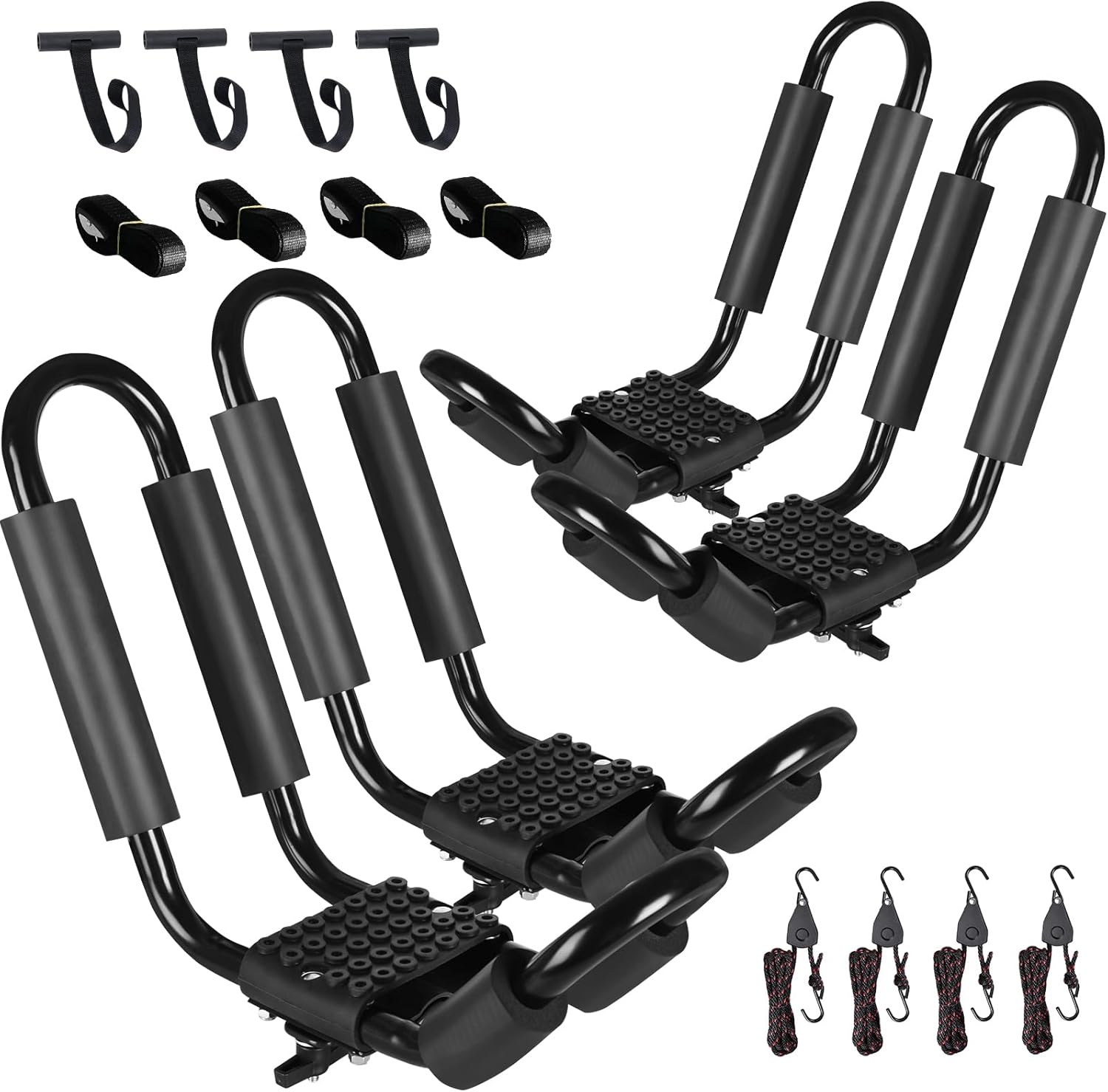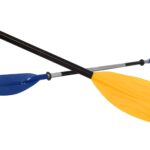How To Strap Kayak To Roof Rack – The Complete Guide for Safe and Easy Transport
If you’ve ever wondered how to strap kayak to roof rack, you’ve probably also pictured your boat flying off the highway mid-trip like a clumsy fiberglass missile. Not ideal.
Strapping a kayak isn’t rocket science, but done wrong, it can feel like you’ve invented a new form of roadside chaos. Let’s fix that with a method that keeps your boat safe, your car scratch-free, and your mind at ease.
Exactly How to Strap Kayak to Roof Rack
Here’s how to strap kayak to roof rack properly:
- Center the kayak on your roof rack crossbars so the weight is evenly balanced. Keep the bow facing forward.
- Use two cam-buckle straps (one for the front crossbar, one for the rear). Loop each strap under the bar on one side, bring it over the hull, loop it under on the other side, then bring it back up and tighten. Snug, not crushing.
- Check strap position so one lies just behind the cockpit and one ahead of it.
- Add bow and stern lines for long trips. Secure these to tow hooks or a safe point under the car, not flimsy bumpers.
- Shake-test the kayak. If it wobbles or shifts, re-tighten slightly.
- Recheck after 10 minutes of driving and at fuel stops.
Now let’s explore all the details and tackle every problems paddlers face when trying to figure out how to strap kayak to roof rack safely.
Tools and Gear You Actually Need
Before diving into the details of how to tie a kayak to a roof rack, let’s cover the kit.
- Cam buckle straps (recommended). Easier and safer than ratchet straps, which can overtighten and damage the hull.
- Bow and stern tie-downs (ropes or specialized lines with hooks).
- Crossbars or a dedicated kayak rack (like saddles or J-cradles). Using the best kayak roof racks makes life easier, but plain crossbars work too.
- Padding or foam blocks to protect hulls and roofs.
- Soft loops or strap sleeves to prevent strap abrasion.
Step-by-Step: How to Tie Kayak to Roof Bars Correctly
Straps are only as good as how you run them. Here’s a detailed breakdown:
- Place the kayak upright, hull down, on the roof rack. Center it so the cockpit aligns roughly between the two crossbars.
- Open one cam strap and toss the free end over the kayak to the opposite side.
- Loop the strap under the crossbar, bring it back up, and throw it over again.
- Insert the strap end into the cam buckle, tighten until secure. Repeat for the second crossbar.
- Position each strap at a strong point: behind the seat and in front of the cockpit.
- Tie off excess strap so it doesn’t flap like a flag on the highway.
That’s the safest method for a single kayak.
|
|
|
|
Why Strapping a Kayak Correctly Matters More Than You Think
Transport is the part of kayaking no one glamorizes, but it’s also where the biggest headaches happen. An improperly tied kayak can:
- Fly off, endangering you and others.
- Crack under its own weight if strapped too tight.
- Scratch your car roof or dent your rack.
- Create fines or liability issues if it becomes a road hazard.
A kayak isn’t just a toy. A fishing kayak, for instance, can weigh upwards of 90 pounds and turn into a battering ram if not secured. That’s why mastering the art of tying down is essential.
How to Strap 2 Kayaks to a Roof Rack
Carrying two kayaks requires a bit more strategy:
- If you have J-racks, angle each kayak on its side. Strap each separately.
- On plain crossbars, place both kayaks hull-down, side by side. Use a strap for each crossbar, running over both boats together.
- Add bow and stern lines for each kayak if possible.
Remember, more weight means more stress on your rack and vehicle roof. Check your car’s roof load limit before you attempt how to strap 2 kayaks to a roof rack.
Transporting a Kayak Without a Roof Rack
Yes, it’s possible, but it’s not ideal. If you don’t own crossbars, you can still transport a kayak by using foam blocks or pool noodles as padding between the hull and your roof. Then:
- Run straps through the open car doors and over the kayak.
- Tighten evenly, front and rear.
- Still add bow and stern lines for safety.
This works for short distances. For long trips, invest in proper hardware. Transporting a kayak without a roof rack should only be a backup plan.
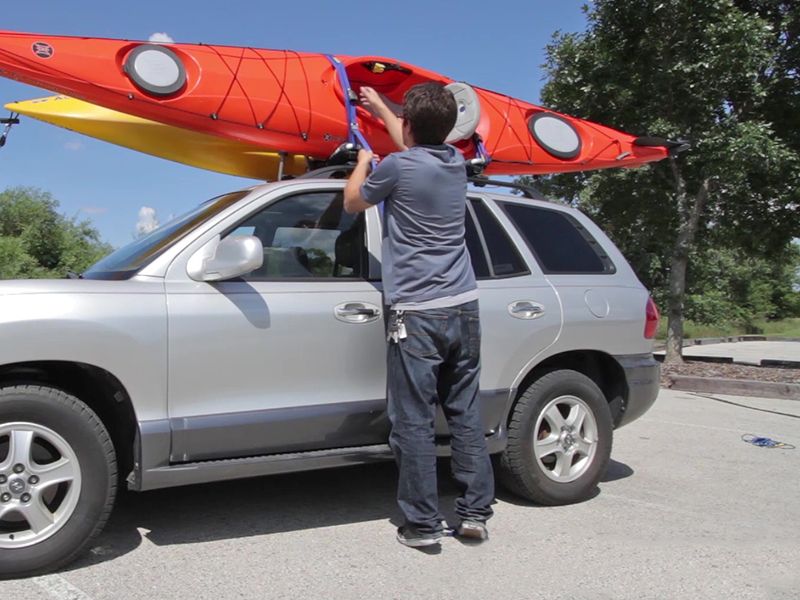
Solo vs Two-Person Loading
Loading alone? Try this method:
- Place a towel or pad on the rear of your car.
- Lift the bow of the kayak and rest it on the towel.
- Walk to the stern, lift, and slide the boat forward onto the roof.
With two people, simply lift and place directly onto the bars. This reduces scratches and avoids straining your back.
Bow and Stern Lines: Why They’re Non-Negotiable
Even if your cross straps feel secure, wind can push the kayak forward or back. Bow and stern tie-downs prevent this. Secure them to:
- Tow hooks under your bumper.
- A hood loop anchor strap (aftermarket option).
Do not attach to plastic bumpers. If you’re covering highway miles, these lines are essential to properly transport a kayak.
Avoiding Damage: Tight Enough but Not Crushing
One of the most common mistakes is overtightening straps. Kayak hulls, especially plastic ones can warp under too much pressure. The goal is “snug enough that the kayak doesn’t shift when pushed, but not so tight that the hull indents.”
A quick test: press down on the boat. If it flexes under strap pressure, loosen slightly.
Common Mistakes to Avoid
- Using ratchet straps and cranking too hard.
- Skipping bow/stern lines on long drives.
- Running straps only through rack hooks instead of looping under the crossbars.
- Leaving loose strap ends flapping.
- Loading the kayak upside down on saddles meant for hull-down transport.
Variations: Different Kayak Types and Racks
- Fishing kayak: Heavier and wider, so use two people for loading. Straps should be slightly wider apart to match hull shape.
- Foam block setup: Good for short trips but check often.
- J-cradles: Great for saving roof space; strap across each cradle and still add bow/stern lines.
- Stackers: For whitewater boats, stack on their sides and strap across.
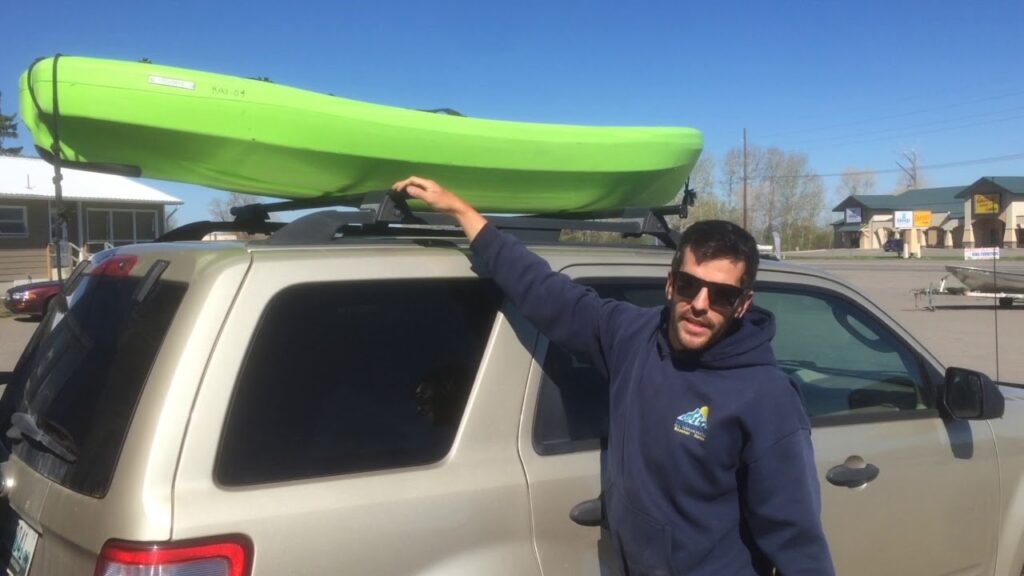
Security Against Theft
Straps keep the kayak on, but they don’t stop thieves. For overnight trips, use a cable lock threaded through the scupper holes or grab handles and locked to your roof rack. It’s not foolproof, but it buys peace of mind.
Long Trips and Highway Driving
High speeds increase wind lift. On long journeys:
- Stop every 50–100 miles to recheck straps.
- Add an extra belly strap for redundancy.
- Watch the weather, side winds can test even the best tie-downs.
FAQs on How to Strap Kayak to Roof Rack
How To Tie A Kayak To A Roof Rack If Straps Are Missing?
Ropes with trucker’s hitch knots can substitute, but straps are safer and easier.
Can I Use Bungee Cords?
No. They stretch under wind pressure and can snap.
How Fast Can I Drive With A Kayak On Top?
Stay within speed limits, but realistically 65–70 mph is a safe ceiling for most setups.
Can I Strap Other Gear With My Kayak?
Yes, but don’t pile items on top of the hull. Kayaks aren’t designed to be load-bearing.
The Bottom Line on How to Strap Kayak to Roof Rack
Learning how to strap kayak to roof rack is less about brute strength and more about knowing the right technique. Once you master the process, it becomes second nature, like tying shoelaces.
Whether you’re figuring out how to tie kayak to roof bars, carrying two boats at once, or improvising with foam blocks, the principles are the same: balance, snug straps, bow and stern lines, and frequent checks.
With the right setup, your kayak rides secure, your car stays scratch-free, and you roll into the launch point looking like someone who’s done this before without the roadside chaos.
